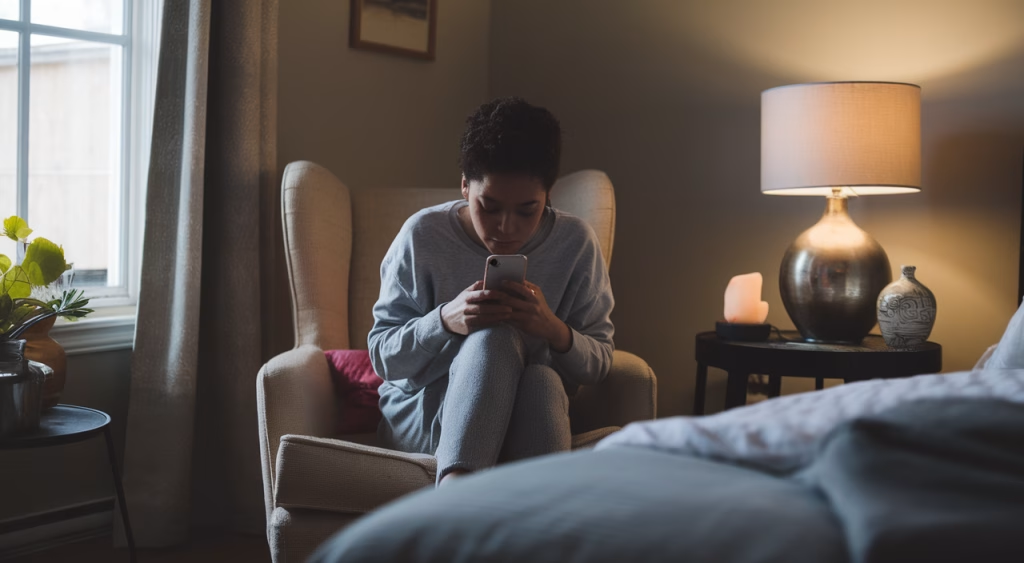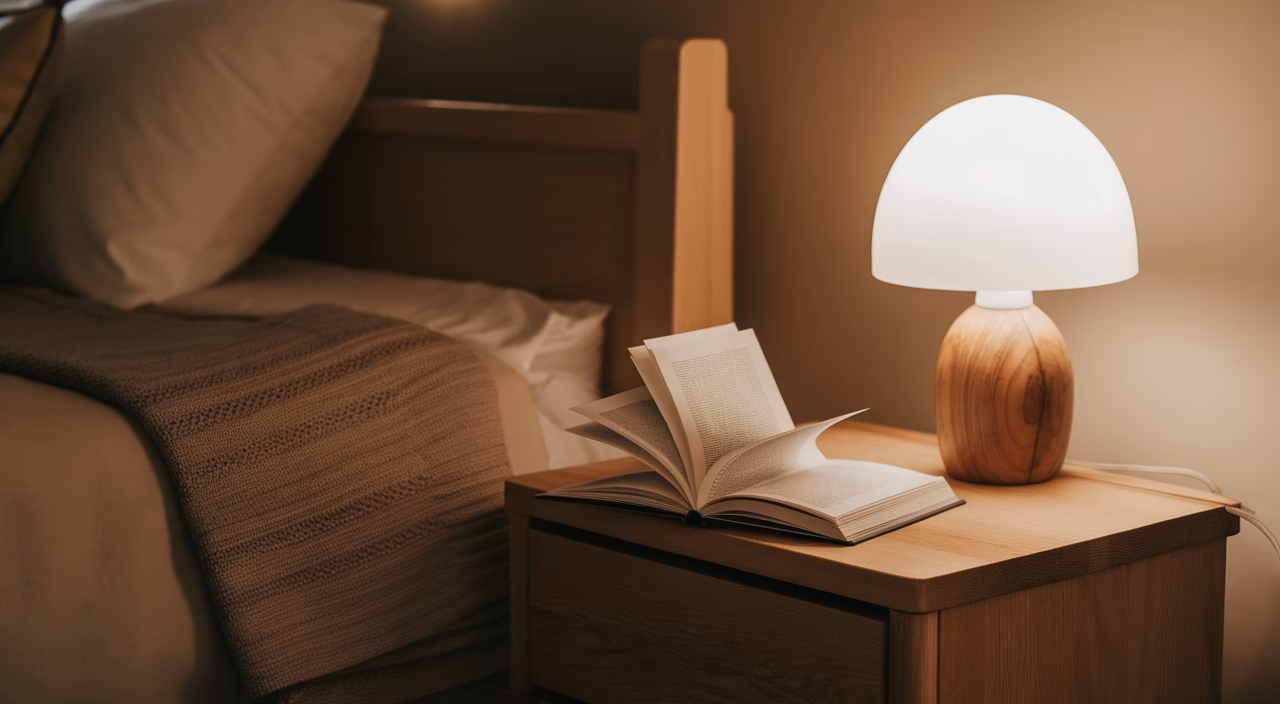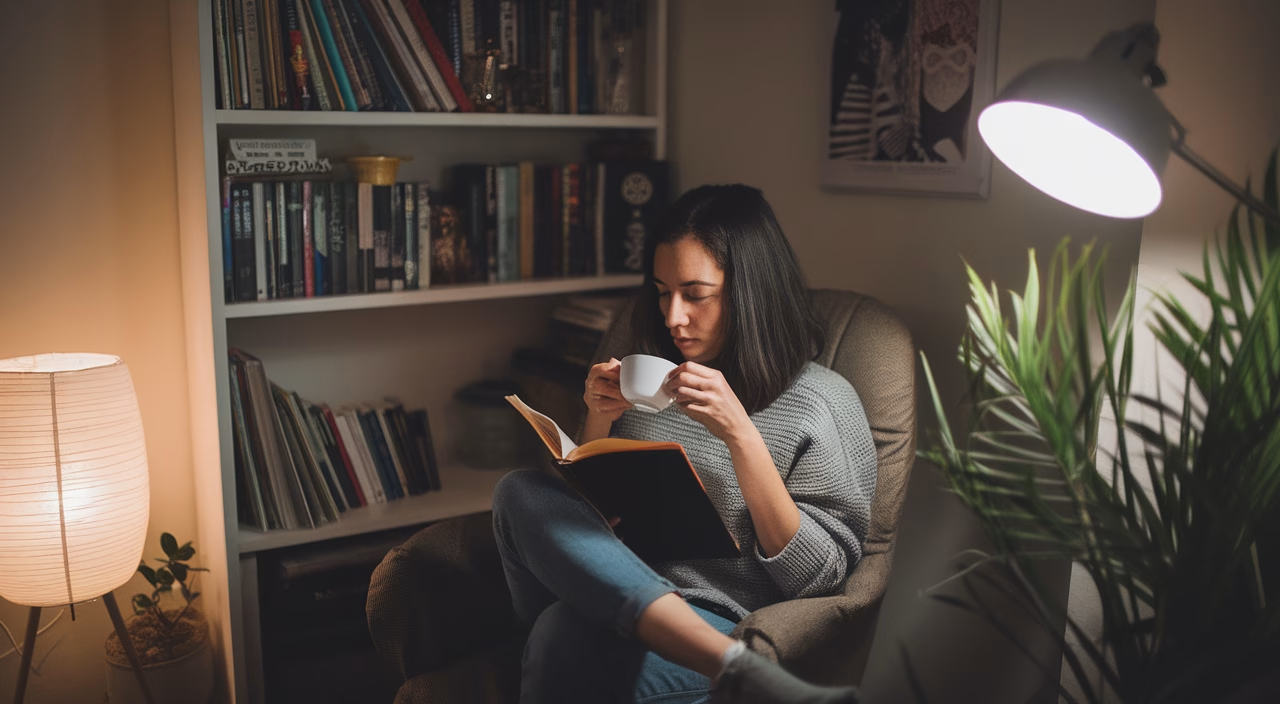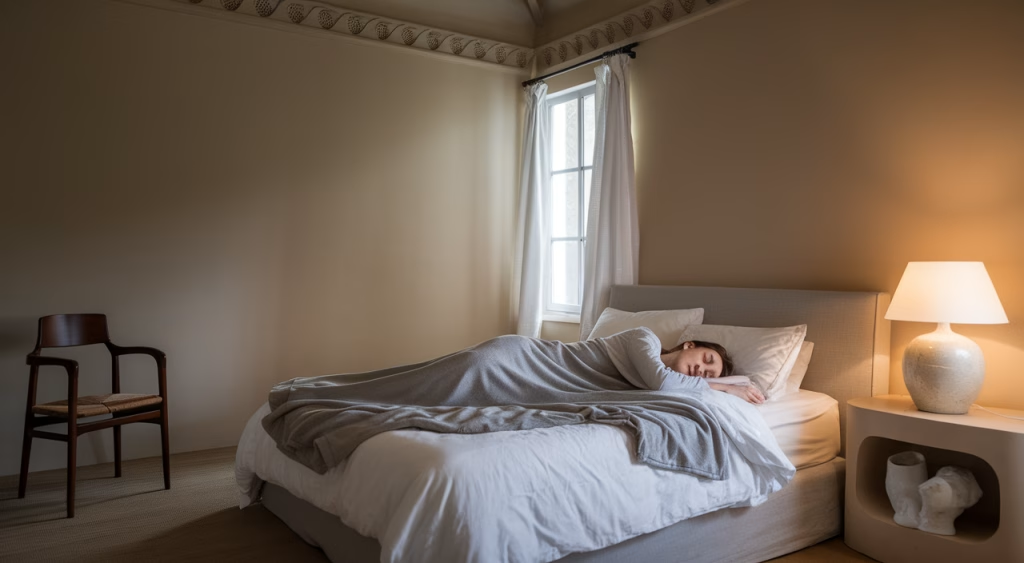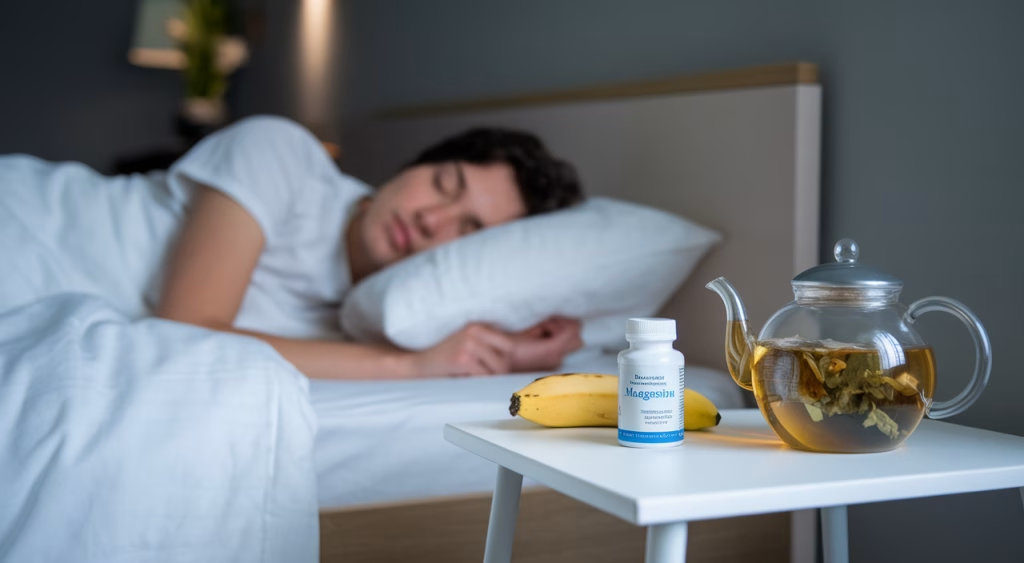How does screen time before bed affect sleep quality?
Technology use before bedtime disrupts your natural sleep cycle by interfering with melatonin production and stimulating brain activity when you should be winding down. The result? Difficulty falling asleep, lighter sleep, and morning grogginess that leaves you feeling drained.
TL;DR: Summary
- Tech affects sleep habits by disrupting circadian rhythms through blue light exposure from screens.
- Blue light from devices suppresses melatonin production, the hormone critical for quality sleep.
- Reducing screen time before bed can dramatically improve how fast you fall asleep and enhance your overall sleep quality.
- Create a consistent bedtime routine that signals your body it’s time to sleep—without screens interfering.
- Practical strategies include setting digital curfews, using blue light filters, and replacing late-night scrolling with calming activities that promote rest.
The Impact of Screen Time on Sleep Habits
Ever noticed how a seemingly harmless scroll through your phone at 10pm turns into an hour-long binge of videos, articles, or texts? You’re not alone in this struggle. The truth is, tech affects sleep habits in ways far deeper than most of us realize. Electronic devices—phones, tablets, TVs, laptops—emit blue light at frequencies that signal your brain to stay alert and awake. This exposure disrupts your body’s internal clock, also known as your circadian rhythm.
When you reduce screen time before bed, you’re giving your body the chance to naturally produce melatonin—the key hormone that signals it’s time to sleep. Screen exposure suppresses melatonin release, which means your brain thinks it should stay alert long after you’ve put the device down.
In practice, excessive screen time leads to:
- Significantly more difficulty falling asleep (longer sleep latency)
- Frequent nighttime awakenings that fragment your rest
- Lighter, less restorative sleep with reduced REM and deep sleep phases
- Feeling unrefreshed and groggy in the morning despite adequate sleep hours
Your bedtime routine sets the foundation for your entire night’s rest. When screens dominate these crucial hours, they actively disrupt the very systems designed to relax and reset your body overnight.
Understanding Blue Light and Melatonin Production
Let’s explore the science behind how screens steal your precious sleep. Blue light is a high-energy visible (HEV) light wavelength primarily emitted by digital screens and devices. While it’s naturally present in sunlight and plays a positive role during daylight hours—helping us stay awake and alert—problems arise when this light exposure continues into evening hours.
As the sun sets, our bodies are naturally designed to shift into rest mode. However, blue light exposure during evening hours sends confusing mixed signals to your brain, disrupting this natural transition. This light directly suppresses melatonin production, the hormone responsible for helping your mind wind down and prepare for restorative sleep.
Think of melatonin as your body’s natural bedtime whisperer, gently guiding you toward sleep. When blue light from screens filters in, especially during your bedtime routine, it silences that gentle whisper and allows your mind to run wild when it should be settling into rest mode.
Research consistently shows that even 1-2 hours of screen exposure before bedtime can cause measurable degradation in sleep quality and delay sleep onset. That’s precisely why managing blue light exposure and learning to reduce screen time effectively is essential for building healthier sleep patterns.
Tips for Creating a Tech-Free Bedtime Routine
Creating a screen-free bedtime routine doesn’t mean you need to radically overhaul your entire lifestyle overnight—it’s about making intentional, manageable changes that compound over time. Here are 10 research-backed strategies you can start implementing tonight to reduce screen time and improve your sleep quality:
10 Ways to Reduce Screen Time Before Bed for Better Sleep
- Set a Digital Curfew: Aim to power down all screens 60-90 minutes before your target bedtime. Use your device’s built-in screen time controls or download apps that enforce daily limits automatically.
- Use Night Shift or Blue Light Filters: When screens are unavoidable, apply warm light filters and activate night modes on all devices. These settings reduce blue light’s disruptive impact on melatonin production.
- Replace Scrolling with Reading: Swap digital content for physical books, audiobooks with sleep timers, or calming podcast episodes to end your day peacefully.
- Create a Wind-Down Alarm: Set a gentle reminder 30–60 minutes before bed to cue your transition into your screen-free bedtime routine.
- Charge Devices Outside the Bedroom: Remove the temptation entirely by charging your phone, tablet, and other devices in another room overnight.
- Design a Sleep Sanctuary: Transform your bedroom into a screen-free zone with soft warm lighting, blackout curtains, and zero electronic distractions.
- Engage in Calming Rituals: Replace screen time with journaling, gentle stretching, meditation, or sipping herbal tea as part of your bedtime routine.
- Invest in Red Light Bulbs: Install red or warm amber lighting in your bedroom and bathroom. These wavelengths support natural melatonin production unlike harsh white or blue light.
- Limit Late-Night Stimulation: Avoid intense games, news consumption, work emails, or emotional conversations during your pre-sleep hours.
- Maintain Consistency: Stick to your screen-free bedtime routine every night, including weekends, to train your brain and body to expect and welcome sleep at consistent times.
Remember, your bedroom should feel like a peaceful cocoon of calm—not an extension of your digital life that keeps your mind racing when you need rest most.
Best Practices for Improving Sleep Quality
Sleep hygiene isn’t just a wellness buzzword—it’s the proven foundation for long-term rest, recovery, and optimal health. Once you successfully reduce screen time, complement these changes with additional sleep-friendly practices that naturally guide you into deeper, more restorative sleep.
Here’s what works consistently in real-world applications:
- Maintain a Fixed Sleep Schedule: Go to bed and wake up at identical times every day—even on weekends—to strengthen your biological clock and circadian rhythm.
- Prioritize Morning Daylight Exposure: Counteract evening screen effects by exposing yourself to bright natural light within the first 2 hours after waking up.
- Limit Caffeine After Noon: Coffee, energy drinks, and caffeinated sodas can significantly delay sleep onset and reduce sleep depth when consumed late in the day.
- Exercise Earlier in the Day: Regular physical activity improves sleep quality, but avoid intense workouts within 3 hours of bedtime as they can be stimulating.
- Optimize Your Sleep Environment: Maintain a cool (60–67°F), quiet, and completely dark sleeping space for optimal rest conditions.
Cost Guide: Creating a Sleep-Friendly Space
| Category | Low-End | Mid-Range | High-End |
|---|---|---|---|
| Red Light Bulbs | $10 | $25 | $60 |
| Paper Books / Reading Material | $5 | $15 | $40 |
| No-Tech Alarm Clock | $15 | $30 | $70 |
| Blackout Curtains | $20 | $45 | $100 |
| Sleep Journal | $5 | $15 | $30 |
Conclusion: Prioritizing Sleep Health
If there’s one crucial takeaway from this guide, it’s this: your screen is not your sleep’s friend, but you have the power to change that relationship. The cumulative effects of evening screen exposure add up quickly—suppressed melatonin production, delayed sleep onset, and restless nights that leave you feeling depleted. However, the encouraging news is that you can reclaim your sleep quality with these simple, science-backed changes.
Whether you start by dimming your bedroom lights, replacing doom-scrolling with journaling, or simply charging your phone outside the bedroom, these transformations are completely within your reach. When you reduce screen time consistently as part of your bedtime routine, you’re investing in better sleep quality and overall health.
Your screen habits directly shape your sleep habits. And your sleep habits determine how energized, focused, and healthy you feel—tomorrow and for years to come. So tonight, power down a little sooner, pick up a book instead, and give your brain the screen-free rest it truly needs.
Frequently Asked Questions
- How long before bed should I stop using screens?
- It’s best to stop screen use 60–90 minutes before your intended bedtime to allow your melatonin levels to rise naturally and support quality sleep.
- Does blue light really affect sleep that much?
- Yes, scientific studies consistently show that even short exposures to blue light can significantly delay melatonin production and disrupt your natural sleep patterns.
- Can I use screen filters instead of giving up screens completely?
- Blue light filters help reduce the impact but don’t eliminate the problem entirely. The most effective strategy combines limited screen use with filters when devices are absolutely necessary.
- What are the signs that screen time is disrupting my sleep?
- Common signs include struggling to fall asleep, experiencing light or fragmented sleep, frequent nighttime awakenings, and consistently waking up feeling unrefreshed despite adequate sleep hours.
- What’s the best non-tech bedtime activity?
- Reading physical books, journaling, practicing gratitude exercises, or gentle stretching can effectively help relax your mind and body as part of a screen-free bedtime routine.
- How does melatonin work in the body?
- Melatonin acts as your body’s natural sleep signal, communicating to your brain that it’s time to wind down. It helps regulate your circadian rhythm and promotes the transition into restorative sleep phases.

